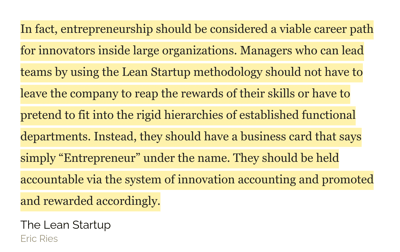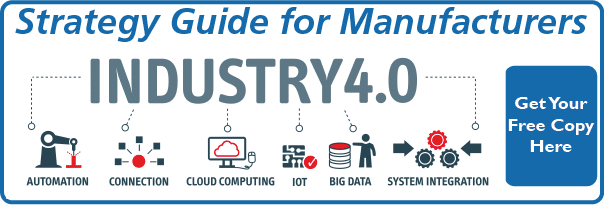King Snake or Coral Snake?
We all face the challenge of making sound, informed decisions quickly and with inadequate information. That's the nature of business, of leadership in general, and particularly of crisis leadership.
It's easy to misinterpret the circumstances.
Just as the venomous Coral Snake can be easily mistaken for the harmless Milk Snake (a King Snake species), many are misunderstanding the COVID dynamic.
And just as the Coral Snake packs an unpleasant punch for those that guess wrong, similarly, misunderstanding the nature of COVID's business impact could be deadly for business.
It's Not the Cause!
My neighbor's business has thrived in recent years. He rents scooters and wheel chairs to cruise lines and convention centers. Needless to say the business changed, virtually overnight. Clearly COVID caused the change, just as PPE manufacturers rapid growth was directly caused by the virus as well.
However, those are outliers.
For most businesses, the changes facing them have been on the horizon for years, but they've been "busy" on deck, coiling lines and focused on routine business operations, rather than up in the rigging looking "over the horizon" to support true strategic planning.
In contrast, take Zoom Communications. It was properly positioned for the macro trends, with a product that's better than the clunky GTM and WebEx. Sure, COVID was a boon for them, and they scaled with amazing aplomb, but they were positioned properly because they recognized the underlying trends that predated the virus.
COVID is a Business Change Catalyst
Examples:
National Public Radio
NPR's ratings have collapsed in most markets. Commuters who listened while commuting...aren't. But that's not new!
"We anticipated these changes. This kind of change was going to take place over the next decade. But the pandemic has shown us what our future is now." Lori Kaplan, NPR's Senior Director of Audience Insights
Meatpacking
In August 2019, Tyson was well on its way to robotizing its plants.
In July 2020 the WSJ reported that COVID had prompted Tyson to consider robotic butchering, and Wired contrasted well developed automation in Scandinavian meatpacking with US operations.
COVID simply enhanced the business case.
Remote Work
In February 2020 (a month or more before COVID was impacting US operations) FlexWork reported on a "major upward trend in the amount of people working remotely." 159% growth from '05-'17.
In June, Entrepreneur reported that 66% of founders are reconsidering investments in office space. (Probably another indicator of how the change was underway anyway is the speed with which the "I told you so" articles are appearing - like this one from the Economist which sees with great clarity in retrospect, the decline of the office beginning in 1822. 🤔)
Business Travel
In its 2020 forecast (published in 2019"BC" - before COVID,) Carlson Wagonlit travel in conjunction with the Global Business Travel Association said "The business of business travel is the first to feel the hit from changes to national and global economies. Global uncertainty and the resulting decline in consumer confidence are slowing the pace of global growth and bringing with it, price increases in air, hotel and ground travel. The business of business travel is the first to feel the hit from changes to national and global economies. Global uncertainty and the resulting decline in consumer confidence are slowing the pace of global growth and bringing with it, price increases in air, hotel and ground travel."
That was the background. Of course even before travel virtually ceased, Korn-Ferry reported that companies moved quickly to reduce travel spend, and IATA predicts that while growth will return, the rate will lag well behind general growth and recovery.
After all, it was already changing.
Each industry has examples. These are intended merely to prompt some ideas about what's happening in your space.
What Changes Will be Catalyzed in Your Industry?
Of course you're changing the way you sell. You're probably reallocating T&E budgets (and realizing what a massive expense that was!) Buyers may be starting to set new expectations that they're not interested in a return to "normal" - that they won't want your reps traipsing through their offices.
It's probably time to look at the model used by technology companies. BDRs (business development reps), SDRs (sales development reps), inside sales, AEs (account executives) may be the best path forward.
Are you collecting and monetizing data yet? Even toilet paper makers are! Why are middle market machine builders so hesitant? Not only will it allow you to deliver creative services and products to customers, but in aggregate you'll develop amazing insights.
Related to data and the cloud (since it's not really about the machines) are you taking blockchain and IoT seriously yet? Your buyers will take it for granted. Some of your competitors (even mid size ones - it's not just for GE & Bosch) are working on it. Do you want to cede that ground?
Do you run a subscription business? Rising generations of engineers will expect PaaS (product as a service) models. That means the upside and challenges (it's not easy to shift from progress payments that provide working capital to monthly subscriptions! check out this case study) of recurring revenue. You're probably already buying this way yourself - don't think that your buyers will want to as well?
Pace of Change
Lenin said "There are decades where nothing happens, and there are weeks where decades happen."
 These things are already happening. We're going to experience decades in the next couple years. That will demand agility. Will your company countenance entrepreneurship?
These things are already happening. We're going to experience decades in the next couple years. That will demand agility. Will your company countenance entrepreneurship?
Like tectonic plates that have accumulated potential energy, the virus has suddenly triggered the earthquake unleashing the kinetic energy. (Don't feel shaking? That doesn't mean it's not happening. And is this article a complete mashup of metaphors, analogies and similes?!)
If you sell systems to meatpackers to support labor intensive butchering, your sales were already destined to fall.
Now they're going to fall much faster.
If your customers don't want to let outsiders in for break-fix maintenance and training, and they don't want to pay for travel, then one of your competitors will step up with remote monitoring and virtual training (and they'll pay with that, at least partially, with profits from monetizing the data byproducts.)
If your balance sheet has been stressed by the loss of down payments normally contributed to working capital by new orders, then maybe you should start studying how Caterpillar's CFO managed the transition to a large portion of MRR (monthly recurring revenue) and how the former Adobe CFO did the same.
Your Perspective Frames Your Response
Here's the bottom line.
If you think of COVID driven changes as a brief phase through which we need pass, as unscathed as possible, to return to business you'll react one way.
If, on the other hand, you think of the changes as induced by COVID but already underway, you'll react in another.
Each change lies somewhere on a continuum, but most are the latter - they were already happening and have just been pulled forward years or decades.
The problem is that responses designed to simply make it through short-term pain and disruption will further expose you to the macro changes at play.
They were already happening.
Hopefully you were already adapting.
Either way, start now.



